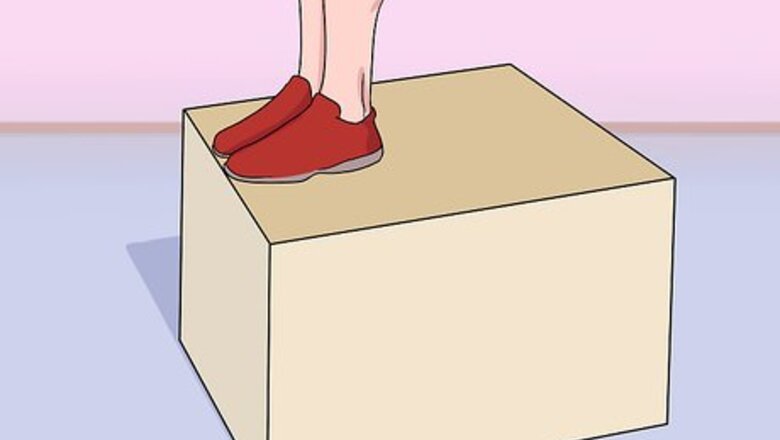
views
X
Expert Source
Alphonso WhiteCertified Personal Trainer, CompleteBody NYC
Expert Interview. 24 February 2021.
This move can be done by anyone, but you should start with a lower weight and work on form. People who train their lower body frequently will especially benefit from learning this move. This includes dancers, gymnasts, powerlifters, and rugby players.
Performing the Movement
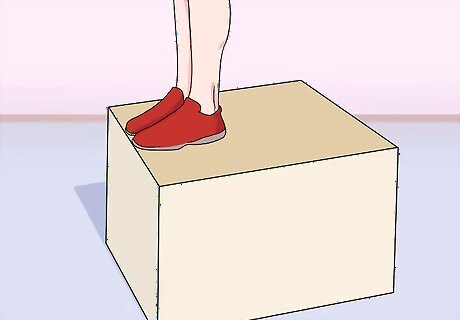
Stand on an elevated surface. To complete a Jefferson curl, you need to stand on a stable surface that is elevated. You can use a box, bench, or elevated mats. If you're just beginning, you may not need a platform at all. Practice doing the move without a platform first.
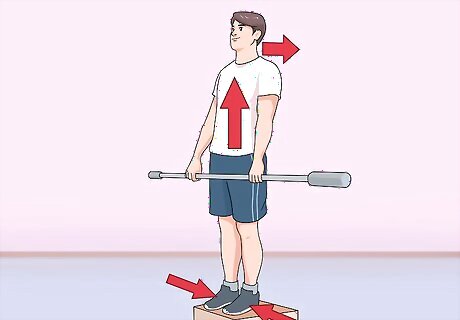
Start in a standing position. The starting position for a Jefferson curl is standing straight up. Your chest should be lifted and your shoulders should be back. Stand straight with your feet hip width apart. As you get better at this move, you can start to press your legs together. Hold a hand weight, kettlebell, or light barbell. You can also do this with nothing in your hands and just use your body weight as you curl forward.
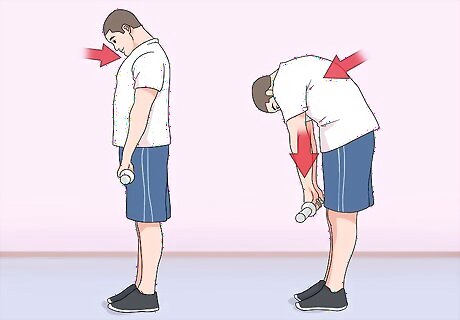
Roll down towards the floor. Lower your chin to your chest. Slowly start bending down as you round and flex your spine to roll one vertebra down at a time. Don’t just bend at the hip. Keep your arms straight and hanging down in front of you. As you do this, it might help to imagine yourself lifting and stretching each vertebra apart like a beaded necklace that is being pulled. The light weight should help pull you down towards the floor. Keep your weight on the ball of your foot and avoid leaning back.
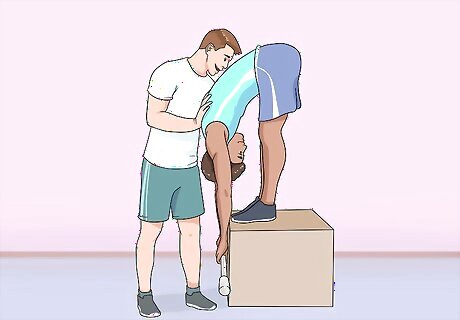
Find the flattest spot of your spine. Once you are hanging completely down, ask another person to help you find the flat part of your back. Try to pull your belly button towards your back from this area. Alternately, you can try to get your nose to touch your knees. Keep breathing during the movement. Film yourself if you cannot find a partner to help you find the flat of your back.

Sink as far down as you can. As you try to press your belly button to your spine, bend forward. Go only as far as your body will comfortably allow; your range of motion will increase over time. Keep your legs completely straight. Don’t let them bend because this takes away from the stretch in your back. Bending too far forward can cause your back to strain when you roll back up. Go slowly, and don't push too far at first. When first starting this exercise, do not reach below your feet. Instead, work your way up to this point slowly. Overexerting yourself too early can cause injuries such as torn hamstrings, a torn Achilles tendon, or compressed disks.

Come up slowly. To stand back up, slowly reverse what you just did. Focus on lifting the lower back, the middle back, and then the upper back. Let one vertebra at a time come up. Continue pressing your chin to the chest, only lifting your head when you are standing straight up.
Putting Together a Routine
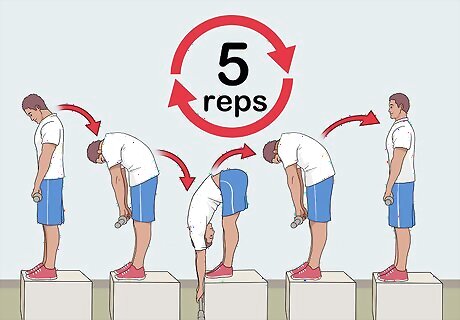
Complete four or five reps. Jefferson curls are great for stretching out the muscles in the back side of your body. It helps stretch the glutes, hamstrings, lower back, and sides. You will get the most benefit from this exercise when you do it correctly and in a slow, controlled manner.

Start with a low weight. Because the movement is meant to stretch, you don’t want to use a lot of weight at first. If you’ve never tried this move before, start with body weight and just bend over empty handed. As you get used to the movement, you can consider adding five pound (2.2 kg) hand weights and then move up to a 10 pound (4.5 kg) kettlebell.
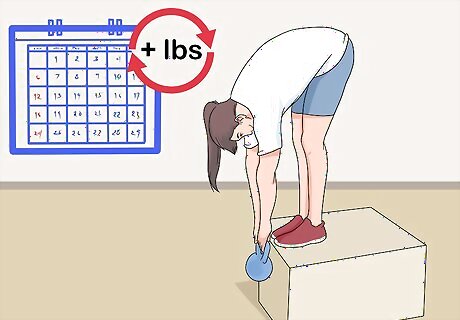
Increase your weight every few months. You won’t be able to add weight to a Jefferson curl as often as you might with a traditional strength training lift. However, you do want to add weight to it to help increase your mobility and strength. Try adding five to ten pounds to your curl every two to three months that you train. You do not have to increase your weight at all. You can get great benefits from using your body weight.

Stop if you feel any pain. This move should feel relaxing and you should feel a slight stretch in your posterior chain. If you feel any pain or discomfort in any part of your lower back or spine area, stop. This may point to an injury.
















Comments
0 comment